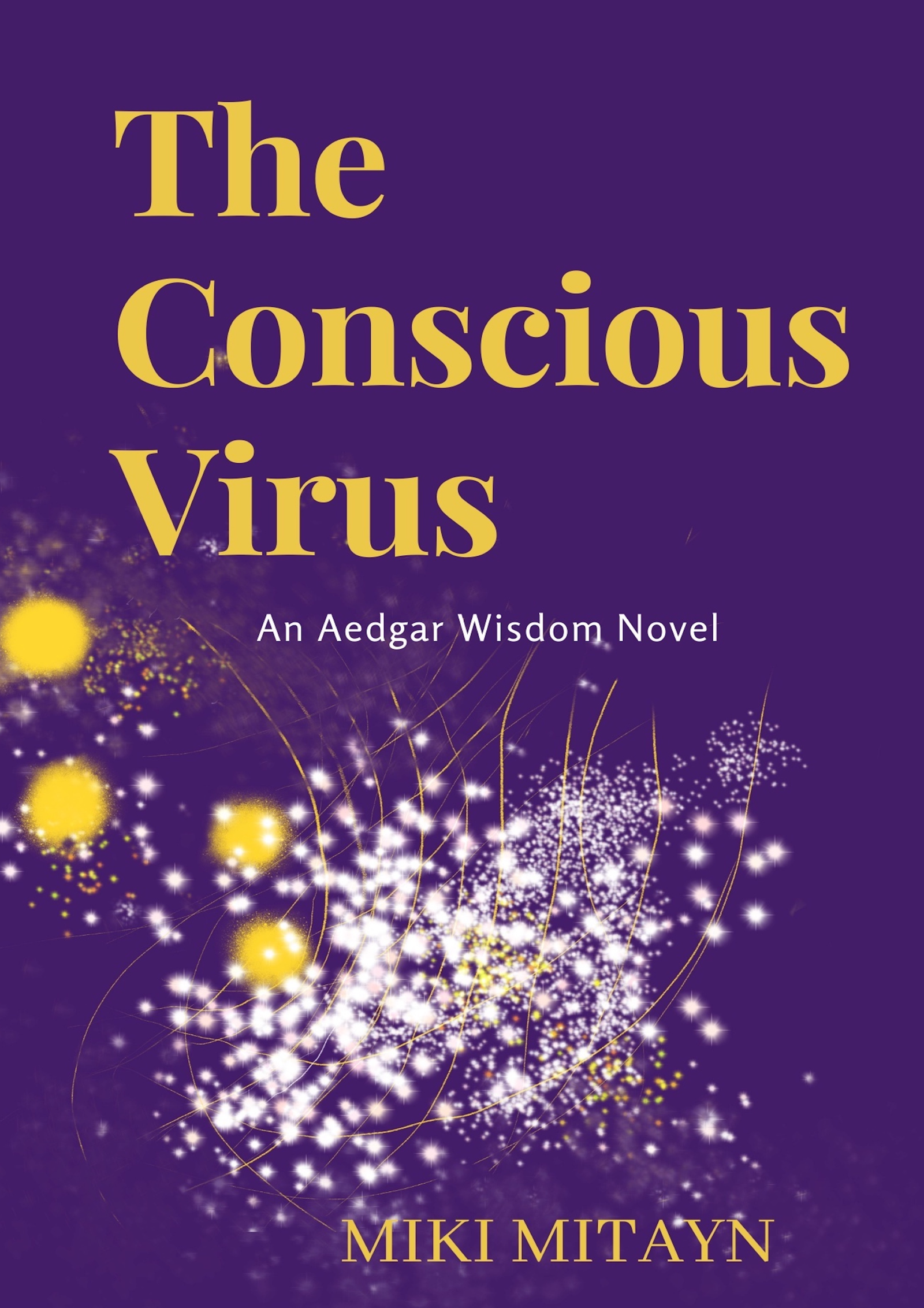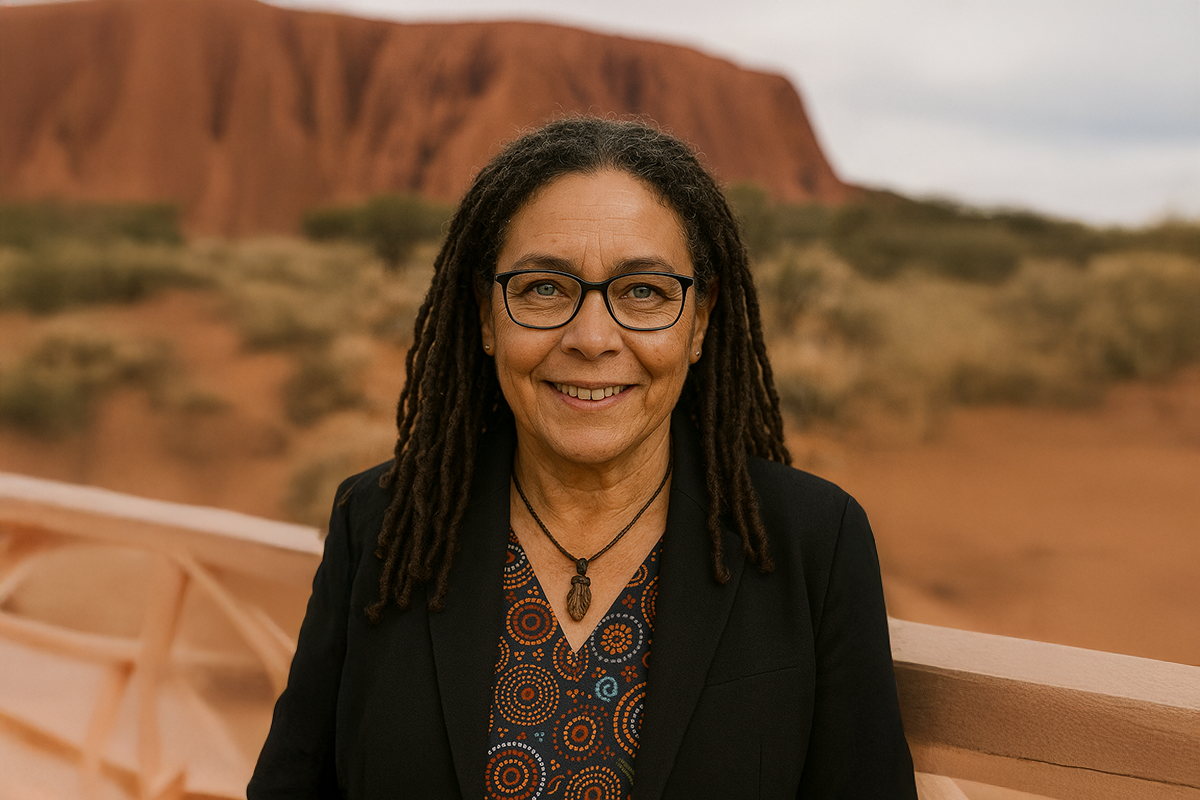PHOTO: Miki Mitayn, healer, scholar, and speculative fiction author, blends Indigenous knowledge and planetary wisdom with profound emotional resonance.
Speculative Fiction Rooted In Ancestry Love And Listening
Miki Mitayn bridges the divide between science and spirit through speculative fiction that honours Indigenous knowledge, queer love, and the unspoken wisdom of the Earth and its ancient memory.
Miki Mitayn writes from the threshold where memory meets mystery, where spirit and science converge without needing to reconcile. A healer and scholar grounded in Indigenous knowledge, she offers fiction that pulses with deep listening—to land, to breath, to the unsaid. Her stories shimmer with planetary grief and love, held within the everyday work of bodies: mending, witnessing, surviving.
In Heated Earth and The Conscious Virus, Mitayn does not simply build worlds—she invites readers into a layered, breathing reality where consciousness stretches beyond the material. Her characters are richly flawed, tender, and courageous, shaped by land and lineage. With the non-physical being Aedgar and his earlier incarnation Bartgrinn, she reaches across time to explore the terrain of loss, resistance and becoming.
Born of Aboriginal, Irish and English ancestry, Mitayn carries stories older than books. Her writing, like her name—lightning tree—is at once fierce and rooted. In these novels, she protects what matters: cultural truth, queer love, and the possibility of wisdom that listens more than it speaks.
To read her work is to slow down, to let silence speak, and to recognise—perhaps for the first time—that the Earth remembers.
Miki Mitayn writes with grace, weaving deep cultural wisdom and heartfelt storytelling into powerful speculative fiction that inspires, challenges, and heals.
What inspired you to create Aedgar, this non-physical being?
A friend became a channel after being considered a sleep talker for years. Something different was going on! One of her partners recorded her ‘sleep talk’ and showed it to a linguist who heard archaic languages. My friend learned to manage her channeling, (once she accepted the nature of it): to channel in English, when she’s awake. This story became Mari’s (with her wife Nerida) in the novel ‘Heated Earth—Aedgar moves in’.
Aedgar arrived on his own. I didn’t plan him—he came as a voice that remembers things we’ve forgotten. He’s not a god or a guru. He’s a spirit who was present, he implies even helping, when the Earth took form. He’s had human lifetimes on Earth. A gay man who found love in Tudor England, specifically.
I wanted to explore grief, memory, and planetary wisdom without preaching—and Aedgar gave me that. Getting to know Aedgar was also a way to explore the idea or reality that human beings are spirits in the material world (as Sting sang in the 80s). He challenges and expands our understanding of the nature of consciousness.
I’m a scientist. I’ve earned honours and post-grad degrees. Like Heated Earth’s protagonist, Dr Nerida Green, my materialist view of the world was shattered by my experience of channeling and non-physical beings like Aedgar.
“Aedgar arrived on his own. I didn’t plan him—he came as a voice that remembers things we’ve forgotten.” – Miki Mitayn
You’ve mentioned your Aboriginal, Irish and English heritage. How does that influence your writing?
My Aboriginal ancestry gives me a deep connection to Country. I prioritise it in my identity because it’s a great gift. Australia remains a divided nation, with limited comprehension of the power of ancestry or respect for Indigenous history.
Meanwhile, we Indigenous people maintain and cherish values and knowledge humanity needs.
The Irish in me brings ghosts, mischief, longing. Many south-eastern Aboriginal people have Irish ancestry because the Aboriginal and Irish people had a common enemy in the Red Coats, with a shared love of storytelling, singing and drinking. So I’m told.
The conversations with Aedgar and Bartgrinn particularly engaged Irish readers. Bartgrinn is an earlier incarnation of Aedgar, an itinerant healer in north Britain over several lifetimes. He witnessed Roman and later Viking invasions. He’s blunt. Bartgrinn and other non-physical beings appear in later books in the series, including the one I’m writing now (working title: Wise Ones Arise) and ‘The Conscious Virus’ published during the Pandemic.
My English ancestry makes me ask questions, gives me that powerful language and the structure and tradition of the novel. My ancestors from those islands also gave me fair skin and eyes, so I’m like a double agent.
My characters live enmeshed in their inheritances, like me.
Was it hard blending Aboriginal culture, spirituality, and fiction?
Respect is key. My stories are mine to tell. And not everything that’s true needs to be public.
The spirituality in the novels doesn’t borrow from Aboriginal tradition directly, but sits beside it, reverently. Elders in the books (and hopefully Nerida and Mari) show what respect looks like in practice—they observe, they listen, they test.
Using a real Community as a setting became essential because each Community has such a distinct history and way of being in the world. Mutitjulu, near Uluru, the setting for much of ‘Heated Earth’, is an exquisite, deeply private place. I couldn’t fictionalise it. I was privileged to live and work there. Senior people permitted me to set stories there as long as I tell my truth. So many lies have been told about Muti. I’m protective of the remote Indigenous Communities. They’re special places, built and maintained by people who highly value Indigenous cultures and ways of living, including languages, dance and the complex interaction that nourishes Country.
Do the clinic scenes reflect your work in Health?
Yes. I worked in remote communities for years. I’ve seen how medicine and relationships interweave in healing. The characters—like the young mother with diabetes—are fictional, but their struggles are real. So is the power of something as simple as a locked food cupboard in the clinic.
What do you hope readers will take from Mari and Nerida’s journey?
Science and spirit don’t have to be enemies. Nerida is a doctor; Mari channels beings. They clash. They love deeply. Learning comes from staying in that tension, with humility.
Aedgar insists that religions are man-made. The idea that you don’t have to be religious to broaden your consciousness beyond what we can touch is important to me, too.
Your books weave love, grief, and metaphysics with suspense. How do you balance that?
I don’t try to tidy it up. Real life holds all of that. One minute you’re diagnosing someone, the next you’re swimming with whales. The suspense isn’t about plot twists—it’s about what we stand to lose if we stop listening to each other or to the Earth.
How do you write Mari’s channeling and the voices?
They begin with the breath. The rhythm of the scene shifts. Sometimes her body moves in unusual ways. When I write these conversations, I don’t edit much—they come through with their own cadence. I’m often surprised. They don’t feel like me, and I don’t know where they’re going.
I’m following the tradition of Jane Robert’s Seth books and Carlos Castaneda’s don Juan. There’s a bit of Kurt Vonnegut and Virginia Woolf in my style, too.
I’ve worked on this series for over a decade now. The characters are like dear friends.
Is the Aedgar Wisdom series a comment on the science–spirituality divide?
Yes, but not to resolve it. I want to hold space for both. The Western mind often demands certainty, but wisdom lives in the in-between—where things are porous, contradictory, alive. These are not simple tales. They ask us to sit with paradox: to feel the tension between science and spirit, modernity and memory, grief and transformation. And through it all, the love between two women—grounded, fierce, and at times hilariously human—leads us deeper into what it means to heal.
EDITOR’S CHOICE
Inventive, witty, and thought-provoking, The Conscious Virus masterfully blends science, spirit, and story into a daring, unforgettable reading experience.



